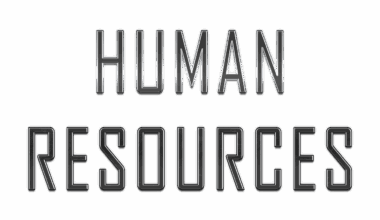Understanding Automatic Stay Orders Issued by Bankruptcy Courts
The concept of an automatic stay is fundamental in bankruptcy law, serving as a protective shield for debtors once they file for bankruptcy. When an individual or business files a bankruptcy petition, an automatic stay is immediately enacted. This order halts virtually all collection activities against the debtor, effectively preventing creditors from pursuing debts during the bankruptcy process. Without this provision, creditors could wind up taking aggressive actions, such as foreclosures or repossessions, disrupting the debtor’s attempt to regain financial stability. The automatic stay is essential, as it gives the debtor time to restructure their finances or discharge certain debts without the persistent pressure from creditors. Specific guidelines determine when and how the automatic stay can be lifted; for instance, secured creditors may request relief if their interests are threatened. However, the automatic stay is not absolute and does not protect the debtor from certain actions such as child support or criminal proceedings. Overall, understanding the automatic stay’s implications helps debtors make informed decisions regarding their financial futures during bankruptcy proceedings.
Automatic stay orders are a powerful tool for individuals undergoing financial distress, providing immediate relief from creditors. Once a bankruptcy case is filed, the stay begins automatically without requiring any court motion. This feature allows the debtor time to breathe and strategize their next steps. Creditors are prohibited from any form of collection, which includes phone calls, lawsuits, or even sending letters demanding payment. The automatic stay applies to the vast majority of creditors, including utility companies and mortgage lenders. However, there are notable exceptions where the stay may not apply, such as when a debtor has previously filed bankruptcy multiple times. In such cases, the stay’s effect might be limited or subject to expiration immediately after filing. The functionality of this stay is crucial for allowing debtors a chance at recovery without interruptions from outside forces. Therefore, individuals ought to ensure they comprehend the conditions under which the stay operates, as well as any exceptions. By being well-informed, debtors can use the automatic stay to strengthen their bargaining positions when negotiating with creditors.
Duration and Limitations of Automatic Stay
The automatic stay remains in effect for the duration of the bankruptcy case, but there are instances when it can be lifted or modified. Creditors may file a motion with the bankruptcy court to request that the stay be lifted based on their specific interests. For example, a secured creditor may argue that their collateral is at risk if the stay is not lifted. The court evaluates such motions, considering factors like the debtor’s ability to maintain payments and overall financial condition. It’s important to note that the automatic stay does not last indefinitely, particularly in cases involving repeat filers. Debtors who have filed for bankruptcy multiple times may find that the automatic stay only applies for a limited period, and in some cases, it can be entirely ineffective. Additionally, certain types of actions are specifically exempt from the automatic stay, including criminal prosecutions and familial support obligations. Understanding these limitations allows individuals to strategize effectively and plan their financial responsibilities appropriately during the bankruptcy process.
The extent of protection offered by an automatic stay varies significantly, impacting various classes of creditors differently. For unsecured creditors, such as credit card companies, the automatic stay can lead to long delays in repayment, fostering a more favorable environment for debt resolution. Meanwhile, secured creditors, who hold collateral, often seek quick relief. They may argue in court that they require access to their collateral immediately to protect their interests. The complexity of bankruptcy cases means that each creditor may experience unique challenges during the stay period. Therefore, creditors need to assess their position and work closely with legal counsel to navigate the implications of an automatic stay effectively. For debtors, understanding these dynamics becomes essential for negotiating settlements that may include keeping specific assets while addressing obligations. The automatic stay creates a framework for managing disputes and encourages communication between debtors and creditors. By highlighting the importance of dialogue, claimants may optimize this period for achieving satisfactory outcomes instead of ongoing conflict, ultimately benefiting both sides during a challenging financial time.
How Automatic Stays Affect Bankruptcy Procedures
The presence of an automatic stay profoundly affects bankruptcy procedures, shaping the landscape of how cases are handled. With the automatic stay in place, debtors can secure an atmosphere conducive to reorganizing their debts without pressure. This crucial aspect gives debtors a significant advantage, allowing them time to assess their financial standings, create viable plans for repayment, or even negotiate new terms with creditors. By providing this breathing room, the bankruptcy process allows affected individuals or businesses to prioritize their obligations effectively. However, should a creditor successfully lift the automatic stay, the debtor could face urgent actions that may jeopardize their overall bankruptcy strategy. Thus, understanding the risks associated with the potential for relief motions is vital for debtors, as they work to protect their assets. Planning effectively during this time can help ensure that debtors maintain their rights while working towards a sustainable financial solution. Therefore, the automatic stay serves as both a temporary shield and a tactical component of the overall bankruptcy strategy, aiding in long-term restorative procedures.
The automatic stay is also essential in illuminating the interaction between bankruptcy courts and state courts. Bankruptcy cases typically hold primary jurisdiction to handle issues regarding debts and collections that arise from the bankruptcy filing. However, this can create confusion among credit claims not covered under the automatic stay during related state court cases. Creditors may find themselves navigating two legal worlds, which can complicate enforcement. If creditors attempt to continue collection efforts in state courts after a bankruptcy case is filed, those actions can be challenged under bankruptcy law. This reinforces the necessity for both creditors and debtors to remain informed about their legal standings throughout the bankruptcy process. Legal representation becomes imperative, especially in complex scenarios involving multiple jurisdictions. An attorney can provide clarity on how the automatic stay affects proceedings in both bankruptcy and state courts. Engaging effectively with legal counsel can help debtors ensure that their interests are fully protected and creditors to understand the limitations imposed by federal bankruptcy law.
Conclusion on Automatic Stay Orders
Understanding automatic stay orders in bankruptcy is crucial for both debtors and creditors navigating financial challenges. Knowing the immediate protections offered to debtors allows for a more strategic approach to debt resolution. The automatic stay halts collection activities and forges an essential breathing space, ensuring that debtors can begin reorganizing their financial lives. However, it also introduces complexities that both parties must navigate, including the potential for lifting the stay by secured creditors. Overall, the automatic stay remains a significant aspect of bankruptcy proceedings, shaping how individuals and businesses manage their debts during crisis periods. For optimal outcomes, all involved stakeholders should actively educate themselves about their legal rights and responsibilities related to automatic stays. By doing so, they can enhance their chances of successfully addressing outstanding debts and working towards brighter financial futures. Ultimately, informed decision-making during this phase can lead to comprehensive debt resolution, benefiting not only the debtor but also the creditors willing to collaborate. Navigating the nuances of bankruptcy law while taking advantage of the protections offered by automatic stays is essential for fostering resilience in the face of financial difficulties.
In sum, the automatic stay orders issued by bankruptcy courts play a vital role in financial recovery. These orders are not only temporary measures; they fundamentally reshape the bankruptcy landscape, offering crucial protections. Both debtors and creditors stand to benefit from comprehending the implications tied to automatic stays. Debtors can work towards financial stability with a reduced level of pressure, while creditors can work strategically within this framework to address outstanding debts. Moreover, effective communication and negotiation can eventually lead to mutually beneficial agreements and the restoration of financial health. By remaining informed and agile throughout the bankruptcy process, all parties involved can achieve a more favorable resolution, marking the pathway to sustainable economic revival.


